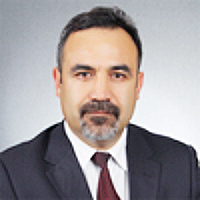Child neglect - still a neglected problem in the global world: A review
Published on: 29th September, 2020
Child neglect is a global problem that involves large costs for both the individual and for society. This article is based on published reviews and meta-analyses in the field of child neglect between 1980 and 2018. Of a total of 433 articles, 13 was included, main Data bases has been PubMed, Scopus, Web of Science, Psych Info, ERIC, CINAHL. The prevalence in the normal population was found to be between 16% and 26%, while the prevalence in clinical groups seem to be significantly higher. For example, was the prevalence of neglect 50% among patients with eating disorder. It is especially important to know who is reporting neglect. Research shows that neglect is strongly associated with among other things, depression, one of the most common illnesses among the general public. The theoretical models that are used are ecological. Risk factors can be found at all levels when using ecological models. Research shows that factors involving the relationship parent-child are among the most important. Neglect is more common in low-income countries than in high income countries.
Most studies point to the importance of prevention. Existing preventive programs are most often of family and parental character.
More research is needed, especially as concerns the development of preventive programs that can identify specific types of neglect and present suitable preventive measures, both at the societal and family level.
Key points
1. Neglect is a global problem.
2. Prevalence depends on the measurement method and can vary between about 16% and 76%.
3. Prevalence is higher when negligence is self-reported than when reported by professionals.
4. The most common and most serious risk factors are present in the microsystem. Parenting and interactions between child and parent are considered important.
5. There is a link between neglect and, above all, depression, but also anxiety, self-harm and eating disorders.
Air pollution and respiratory health
Published on: 1st September, 2020
As per report of WHO [1] (World Health Organization), air pollution (ambient/outdoor and household/indoor air pollution) kills an estimated seven million people worldwide every year largely as a result of increased mortality from stroke, heart disease, chronic obstructive pulmonary disease, lung cancer and acute respiratory infections. Data of WHO shows that 9 out of 10 people breathe air containing high levels of pollutants. World Health Organization is working with countries to monitor air pollution and improve air quality. From smog hanging over cities to smoke inside the home, air pollution poses a major threat to health and climate. More than 80% of people living in urban areas and around 91% of the world’s population live in places where air quality levels exceed WHO limits, with developing and under-developed countries suffering from the highest exposures, both indoors and outdoors [1]. While outdoor air pollution comes from the motor vehicles, burning of fossil fuels and other industrialization activities, indoor air pollution is the result of tobacco smoke and burning fuel for cooking & heating. Furniture and construction materials also emit such pollutants. Both outdoor and indoor air pollution are harmful to the human health.
The practice of self-medication in children by their mothers in Lubumbashi, Democratic Republic of Congo
Published on: 17th July, 2020
OCLC Number/Unique Identifier: 8658074907
Self-medication is a common practice in Democratic Republic of Congo (DRC). There are few studies on mothers’ practice of self-medication in children in DRC. Trying to draw an inventory of this practice, we carried out a survey of self-medication of children under 12 years of age by their mothers (n = 392) in Lubumbashi, DRC. The main objective was to assess frequency of self-medication and the secondary purposes were to describe habits, dangerous behaviors and common mistakes. The results speak for themselves: 96% of the mothers self-medicate their children; 95.7% do not know the exact dosage of the drug used; 97.17% do not check the expiry date; over 91% of the mothers use antimalarials, 41.3% antipyretics/analgesics and 26.3% antibiotics. Healthcare practitioners should involve household members in focused awareness on self-medication and its negative implications in order to encourage them to serve as change agents against the practice by mothers.
Pharmaco-economic study and cost of care for chronic diseases: Case of Haemophilia in Morocco
Published on: 2nd April, 2020
OCLC Number/Unique Identifier: 8577726167
This paper is an attempt to enrich the literature about the role that can play some economic approaches, such as cost-effectiveness analysis, in order to help medical stuffs to decide about the treatment to adopt in case of a chronic disease such as Haemophilia. Data from morocco were gathered in order to explain the importance of such approaches.
“Syndrome of Contractures and Deformities” according Prof. Hans Mau. Symptoms, diagnosis, treatment: Recommendations for parents
Published on: 10th March, 2020
OCLC Number/Unique Identifier: 8560724023
In development of movement apparatus in small children, youth and – if not cured – in adults play the role two factors. First is connected with small disorders in brain – and in Pediatrics Orthopedic Departments we see very often children with the symptoms of Minimal Brain Dysfunctions [MBD]. The second is connected with asymmetries in anatomy and in function of movement apparatus in “Syndrome of Contracture and Deformities” described by Professor Hans Mau (Tübingen, Germany). These second problems are the subject of this paper
So-called idiopathic scoliosis – disfiguring deformity in children, pain problems in adults. Information about biomechanical etiology, classification and therapy
Published on: 10th March, 2020
OCLC Number/Unique Identifier: 8553234161
In the article presented the etiology of the so-called idiopathic scoliosis (Adolescent Idiopathic Scoliosis [AIS]), new classification, there are given rules of therapy and causal prophylaxis. This knowledge is based on observations from 1984, but essentially from the years 1995 – 2007. In 2001 it was given the first description in classification – “S” scoliosis in 1st group / type and “C” and “S” scoliosis in 2nd A / B group and types, in 2004 “I” scoliosis in 3rd group / type.
Case-based education to improve learning and faculty teaching of residents and students in a clinical setting
Published on: 5th February, 2020
OCLC Number/Unique Identifier: 8553243394
Introduction: Current pediatric residents spend less time in the neonatal intensive care unit (NICU) and as a result, resident exposure to neonatal pathophysiology has decreased. Engaging learners efficiently while balancing clinical demands is challenging. Practices to enhance adult education include integration of problem centered learning into the demands of daily life in an environment in which learners feel safe asking questions and expressing themselves.
Methods: With this principal in mind, we developed a curriculum to enhance resident and medical student education during busy NICU rotations. The curriculum was case-based, available on-line and facilitated by neonatology faculty and fellows. A template designed to be concise and interactive was used to create and present the cases. After the case vignette, the template prompted medical students and residents to generate a differential diagnosis, order a diagnostic workup and narrow the diagnosis. Discussion of the diagnoses occurred at the conclusion of the cases; however, the template discouraged didactic lectures.
Results: In two years, cases were viewed 2,362 times. Facilitators and learners rated the quality and utility of the cases favorably overall. Cases took approximately 20 minutes to complete. Approximately 57% of survey respondents reviewed 1-2 cases per week and 9.6% reviewed 3-5 cases per week.
Discussion: A template with a concise and consistent format to construct and present cases allows for the creation of a curriculum that can be incorporated into a clinically demanding service and may enhance clinical teaching and learner engagement.
Aripiprazole-induced seizures in children with autism spectrum disorder and epilepsy
Published on: 31st January, 2020
OCLC Number/Unique Identifier: 8530277855
Purpose: Children with autism spectrum disorder are at an increased risk for developing seizures, which can be triggered by classical antipsychotics. Aripiprazole is an atypical antipsychotic that has a safer drug profile. The objective is to present the experience with seizure control in autistic children who are placed on Aripiprazole.
Methods: Series of consecutive autistic children with comorbid epilepsy treated with Aripiprazole were identified prospectively over a 3-year period. Monthly follow up by one pediatric neurologist was performed to document seizure control.
Results: 56 autistic children with comorbid epilepsy were placed on Aripiprazole. Most children (59%) were seizure free for at least 6 months. The initial Aripiprazole dose was 5 mg in all patients. Follow up ranged between 5-8 months (mean 6.9). A total of 5 (9%) children developed seizure provocation (3/5) or worsening seizure control (2/5). There were 3 males and 2 females with ages ranging between 6-11.5 years (mean 8.5). Three of these children had a previous history of seizure worsening with other antipsychotic drugs (respiridone in 2 and haloperidol in 1). One child with seizure provocation developed status epilepticus 5 days after introducing Aripiprazole that required intensive care admission. The drug was stopped in all 5 children with no long-term effects.
Conclusion: Seizure provocation or worsening seizure control is not uncommon following the introduction of Aripiprazole in autistic children with controlled epilepsy. Although the risk is low, parents should be warned and advised on what to do, particularly in the first month of therapy.
Current childhood cancer survivor long-term follow-up practices in South Africa
Published on: 29th January, 2020
OCLC Number/Unique Identifier: 8530277122
Background: The number of childhood cancer survivors (CCSs) is increasing due to improved survival. Most suffer at least one treatment-related late effect, even decades after treatment, thus lifelong long-term follow-up (LTFU) care is a necessity. Currently no standardized LTFU programme for CCSs exists in South Africa.
Study purpose: This study investigated current LTFU care of CCSs in South Africa.
Methods: A survey was conducted amongst 31 South African paediatric oncologists using the SurveyMonkeyTM online tool. Information obtained included: training/experience, LTFU practices, late effects knowledge and opinion regarding the importance of a standardized LTFU programme.
Results: The response rate was 74% (23/31). Respondents had an average of 9 years’ experience. All (22/23; 96%) regarded LTFU as important. Only half (12/23; 52%) discussed late effects at diagnosis. Infertility and second malignancy risks were discussed by a third. Less than half (48%) used LTFU guidelines; the majority (9/11; 82%) adjusted them to the local context. Most survivors were followed by a paediatric oncologist (17/23; 74%).
About half of respondents (47.8%) shared LTFU with colleagues in private practice (50%), secondary (66.7%) or primary care facilities (25%). Almost half of respondents (10/23; 43.5%) regarded their late effects knowledge and LTFU experience as good, 8/23 (34.8%) as adequate and 3/23 (13%) as inadequate. All agreed that a national LTFU programme would be very important (87%) or important (13%). Almost half of the respondents (48%) understood what a Survivorship Passport was.
Conclusion: It is essential to develop a national standardized LTFU programme for CCSs in South Africa to ensure appropriate care for all survivors.
Branchio Oculo Facial Syndrome
Published on: 29th November, 2019
OCLC Number/Unique Identifier: 8508295972
A 3-month-old girl presented to the surgical consultation room with bilateral cleft lip incomplete. A girl weighing 4205 g, was born at term after an uneventful pregnancy with a birth weight of 2500 g. There was no family history. On examination, a congenital, linear, erythematous cutaneous anomaly on the left side of her neck was highlighted with ocular anomalies (strabismus and the eyes are widely spaced) and a broad nose with a flattened tip. The examination of the other systems was unremarkable. In front of the association of these different anomalies BOFS was suspected but molecular diagnosis has not been made. The child benefited surgery to correct cleft lip with tennisson procedure with a good postoperative result.




